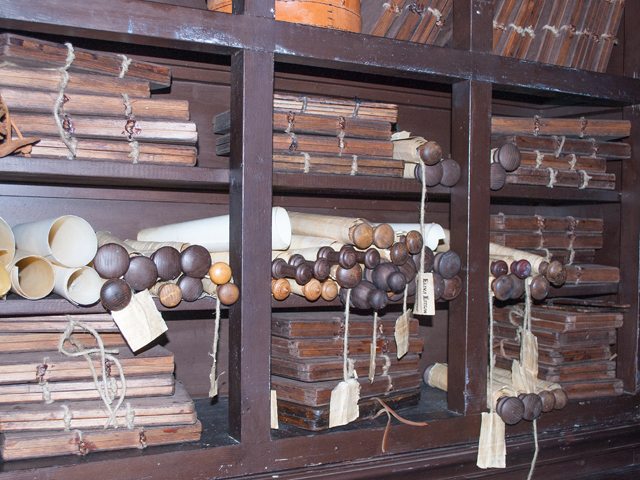Booksellers in Ancient Rome
In antiquity, the author wrote the original manuscript of his work himself or dictated to a scribe slave. The manuscript was then given to a publisher, who had it copied by professional scribes, who were usually slaves. Before distribution, the ancient Roman books were proofread by an editor (lat. corrector) for mistakes. However, sometimes this was done rather poorly, as the geographer Strabon (63 BC – 19 AD) complained about error-ridden copies in Rome and Alexandria’s bookstores. From an exchange of letters between Cicero and his publisher and friend Atticus, it can be seen that Atticus even recalled books that were already at the booksellers upon Cicero’s request in order to make late corrections.
For early Christianity, we are given indications for the entire process of editing, publishing, distributing and selling of books in the city of Rome and beyond. In the so-called Shepherd of Hermas we read:
(2)
The elderly woman came and asked if I had already given the book to the
presbyters. I said that I had not. 'You have done well', she said, 'for I have
some words to add. Then, when I complete all the words, they will be made known
through you to all those who are chosen. (3) And so, you will write two little
books, sending one to Clement and the other to Grapte. Clement will send his to
the foreign cities, for that is his commission. But Grapte will admonish the
widows and orphans. And you will read yours in this city, with the presbyters
who lead the church.[1]
If
this short note reflects a typical praxis, then books were published and
distributed by the author, once they had been read by a few insiders and
amendments had been made by those first readers. But the publishing remained
the author’s responsibility, as did the first copying and sending out of the
book. The first copies, then, went to specifically commissioned people, as in
this case to Clement who was the agent for foreign cities. These agents made
further copies (as otherwise Clement could not have sent the book to a number
of foreign ‘cities’), while others, as here Grapte, used their copy for
instruction. The reading out of the book to the leading people in the
community, the presbyters, without handing it out, lay with the author. Books,
therefore, did not simply make their way into the public domain. As today, there
existed proper structures and procedures for writing, correcting,
proof-reading, revising, publishing, copying and distribution processes that
led to a diverse readership with regards to location, purpose and intent.
No comments:
Post a Comment